A dolphin which was seen playfully joining a group of swimmers in Dorset has been injured by a boat propeller.
Lynda MacDonald, 50, and her partner, son and his girlfriend were joined by the bottlenose dolphin on their morning swim in Lyme Bay, Dorset on August 3.
A video showed the playful mammal dancing across the water in a vertical position asking for belly rubs and guiding people across the water with its beak.
However the friendly dolphin has since been injured by a boat in the Lyme Bay area, as wildlife experts began to fear for its safety.
An urgent warning has now been issued to swimmers to stay away from the creatures, as it can lead the animals to let their guard down.
A spokesperson for the Marine Management Organisation said: ‘We’re increasingly concerned about a lone dolphin spotted in Lyme Bay, Dorset, following multiple potential marine wildlife disturbance offences observed online and shared on social media.
‘Dolphins may seem friendly, but they are wild animals. The dolphin in Lyme Bay has already been injured by a suspected boat propeller.
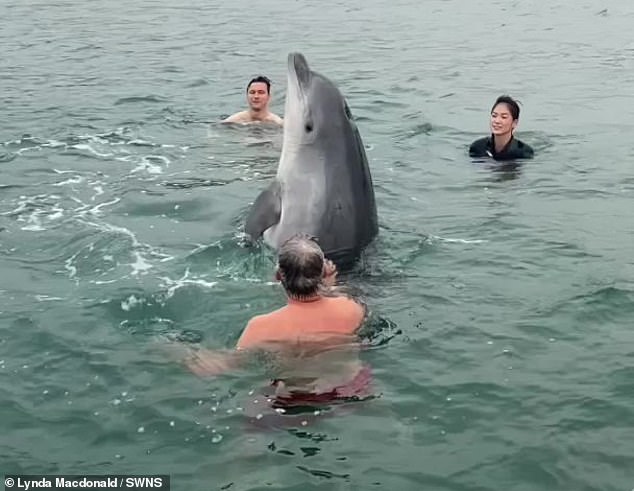
The bottlenose dolphin approached the family shortly after they entered the water for their 6am swim at Lyme Bay, Dorset on August 3
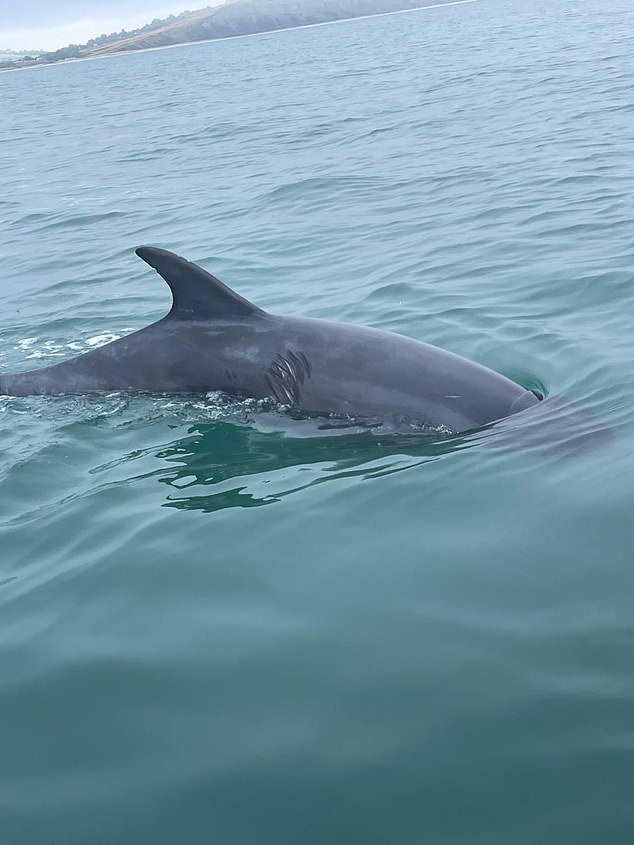
The dolphin seen frolicking with swimmers in Lyme Bay has been injured by a boat propeller
‘Please remember: Never swim with, touch, feed, or approach dolphins. If a dolphin approaches you, calmly leave the area.
‘Human interaction can cause dolphins to lose their natural wariness, leading to injury or even death. Disturbed dolphins are also known to become aggressive toward people.
‘Let’s protect them by keeping our distance and please share this message to respect their space.’
Lynda previously spoke about her ‘magical moment’ when she encountered the animal last week.
The mum, who works in advertising and splits her time between west London and Dorset, said: ‘I’m so glad I caught it on camera.
‘Out of nowhere, the dolphin immediately approached us and wanted to join in on the action.
‘It was friendly and playful. It even started guiding members of our group along the water with its beak.
‘It was not distressed by our presence and was very confident around us.
‘I’ve seen a dolphin before, but this is something I’ll remember forever.’
According to Dorset Wildlife Trust, 28 species of whales, dolphins, and porpoises are recorded along the UK coastline – a number of these have been recorded in Dorset.
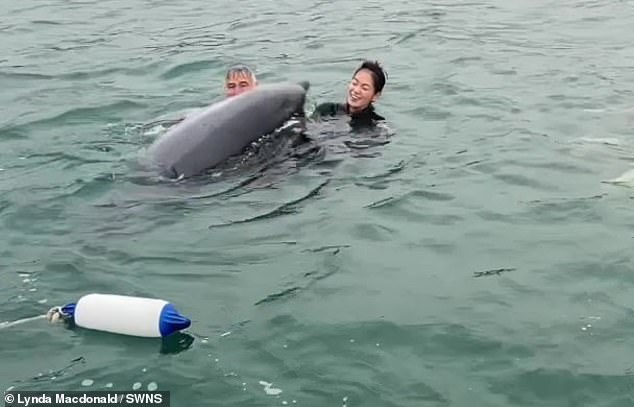
The playful dolphin appeared to dance in the water as it performed for its awestruck audience
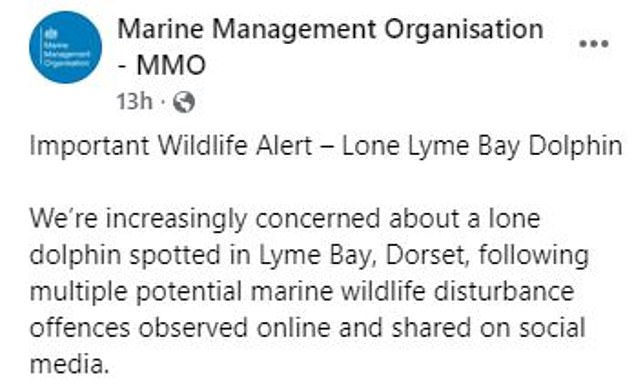
Bottlenose dolphins tend to spend more time inshore than other species, making them easier to spot from the land as well as from the sea.
They are regularly seen off the coast of the UK, especially in Moray Firth, Scotland, Cardigan Bay, Wales, and off the coasts of Cornwall and Northumberland.
The UK is thought to have a population of around 700 coastal bottlenose dolphins, who are renowned being highly sociable and indulging in playful demonstrations like leaping and bow-riding.
‘The sea belongs to dolphins – we were lucky to spend a moment with it,’ Lynda said.
‘You can hear from the footage audio that the dolphin was happy to interact with us.
‘But we were mindful; we played for five minutes and then let it go on its way.’
Yesterday, experts revealed what the behaviour really means.
Thea Taylor, managing director of the Sussex Dolphin Project, said she believes the dolphin was a young male adult who wanted to ‘make connections’.
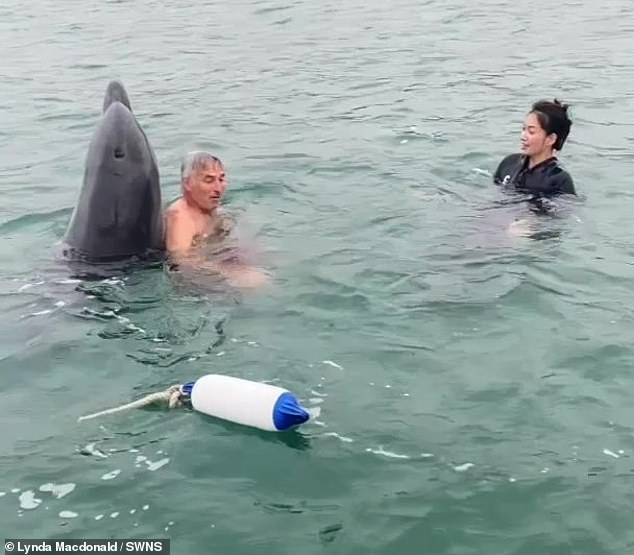
The footage shows the playful mammal dancing across the water in a vertical position, asking for belly rubs and guiding people across the water with its nose
‘Bottlenose dolphins are inherently curious animals and have often been shown to mimic behaviours of other individuals and other animals,’ she told The Daily Mail.
It may be that this curious dolphin was trying to mimic the people’s upright position in the water.
‘Playing and mimicking movement is one of the main ways in which dolphins secure bonds with other individuals so, if it is a solitary dolphin without a pod it may be trying to find connections with other animals.
‘The behaviour does really look like the animal is playing, the animal is choosing to stay with the family and they gave the animal space to move off when it was ready.’
She warned that while this was a situation where the dolphin appeared to seek out the family, she strongly encourages other people not to seek out animals like this.
‘Encouraging interactions with people can be dangerous for the animal, and people too,’ she said.
‘They are powerful animals and may not intentionally hurt people, but accidents can happen.’
A closer look at the dolphin’s behaviour suggests it was performing a manoeuvre known as spy–hopping – effectively treading water.
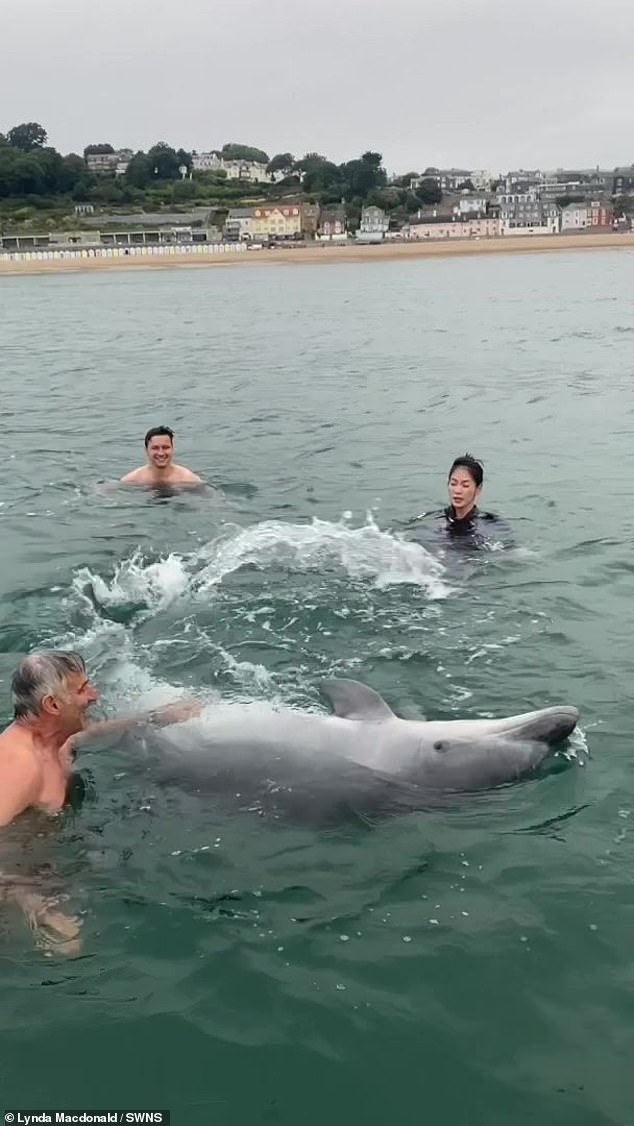
The dolphin even rolled on its back as it begged for belly rubs from its willing swimming companions
This involves the dolphin holding itself vertically and kicking with its tail in order to hold its head above the water.
The behaviour is commonly used to visually inspect the environment above the water line.
The dolphin in the video also appears to approach and rub itself against the swimmers.
While reasons for this may be unclear, similar actions recorded during other human–dolphin encounters have led scientists to believe it could be misdirected sexual advances.
In 2018, a ‘love–lorn’ dolphin’s interest toward humans caused a French town to ban swimming.
The animal, named Zafar, would rub up against swimmers, boats and kayaks and even allowed people to hold on to his dorsal fin in the Bay of Brest.
In other instances, the dolphin prevented a female swimmer from returning to shore – she was later rescued by boat – and lifted another woman out of the water with his nose
Elizabeth Hawkins, lead researcher with Dolphin Research Australia, explained that solitary male dolphins may rub themselves on people or objects to form and reinforce bonds.
‘It’s been observed that dolphins and different whale species will rub themselves against objects with what appears to be some type of sexual satisfaction coming about,’ she said at the time.












